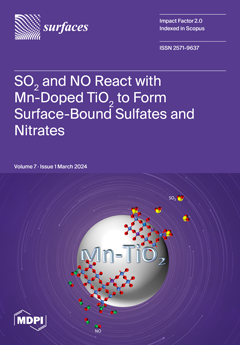In the quest for advanced materials suitable for next-generation electronic and optoelectronic applications, tungsten disulfide (WS
2) ultrathin films have emerged as promising candidates due to their unique properties. However, obtaining WS
2 directly on the desired substrate, eliminating the need for
[...] Read more.
In the quest for advanced materials suitable for next-generation electronic and optoelectronic applications, tungsten disulfide (WS
2) ultrathin films have emerged as promising candidates due to their unique properties. However, obtaining WS
2 directly on the desired substrate, eliminating the need for transfer, which produces additional defects, poses many challenges. This paper aims to explore the synthesis of WS
2 ultrathin films via physical vapor deposition (PVD) followed by sulfurization in a confined space, addressing the challenge of film formation for practical applications. Precursor layers of tungsten and WS
2 were deposited by RF magnetron sputtering. Subsequent sulfurization treatments were conducted in a small, closed, graphite box to produce WS
2 films. The physical and chemical properties of these precursor and sulfurized layers were thoroughly characterized using techniques such as X-ray reflectometry (XRR), X-ray diffraction (XRD), Raman spectroscopy, scanning electron microscopy (SEM), and X-ray photoelectron spectroscopy (XPS). The findings reveal notable distinctions in film thickness, structural orientation, and chemical composition, attributable to the different precursor used. Particularly, the sulfurized layers from the tungsten precursor exhibited a preferred orientation of WS
2 crystallites with their (00L) planes parallel to the substrate surface, along with a deviation from parallelism in a small angular range. This study highlights the necessity of precise control over deposition and sulfurization parameters to tailor the properties of WS
2 films for specific technological applications.
Full article





